Ancient Dogu Figurines With Large Goggle-eyes Defy Scholarly Explanation
The Jomon Period is the earliest identifiable period in Japanese history and is broken into several categories—Incipient, Early, Middle, and Late. Comprised of a sedentary culture, the Jomon people are best known for their early pottery skills and are considered to have created the earliest forms of pottery in the world.

Jomon vessel dated to the Middle Period, 3000–2000 BC. (I, Sailko/CC BY-SA 3.0)
Most significant about the Jomon culture are their dogu: human- or animal-like figurines which appeared as early as the Incipient Period, roughly 14,000-4,000 BC, but were most significantly produced in the Middle Period. It is believed by most Japanese art and archaeological scholars that, despite their multiple possible functions, these works were most likely evidence of an early religious culture and shamanic rites.
The Jomon culture mostly likely spanned the whole of the Japanese archipelago, evidenced by the Jomon pottery found throughout the various islands. Most often, these dogu figurines were found in grave circles or stone circles, indicating some form of spiritual inclination of the culture. Finding these figurines among the dead signify that there was some meaning for them in afterlife rituals, though what exactly this meaning was can never be definitively known. However, these statuettes underwent many forms of transformation throughout the various periods within the Jomon culture, indicating both a sophistication of artistic technique—undoubtedly inspired by external cultural interactions—and a heightened level of spirituality. This is best understood by an analysis of the figurines themselves.
- Ancient Chinese artifacts found to have extremely rare iron compound
- Voices of the Dead: The Strange Origins of Eye Idols
Interpreting Dogu Types: From Venus Figures to Goggle-Eyed Variants
There are various types of dogu figures, categorized into four groups: "heart shaped (or crescent-shaped eyebrow)", "horned-owl type", "goggle-eyed type", and "pregnant woman type." The various types all follow the same basic pattern: they tend to appear short and heavy, with small, wide legs, and broad shoulders and hips. Differences are identified by the previously mentioned names of the forms—the venus figures tend to have further accentuated hips (Figure 1) and the "goggle-eyed" have enormous eyes that nearly swallow them entire face (Figure 2). Because of the tendency for all of these forms to be women however—evidenced by their breasts and the lack of penises—there is a very prominent belief among scholars that the dogu might have been fertility statues.
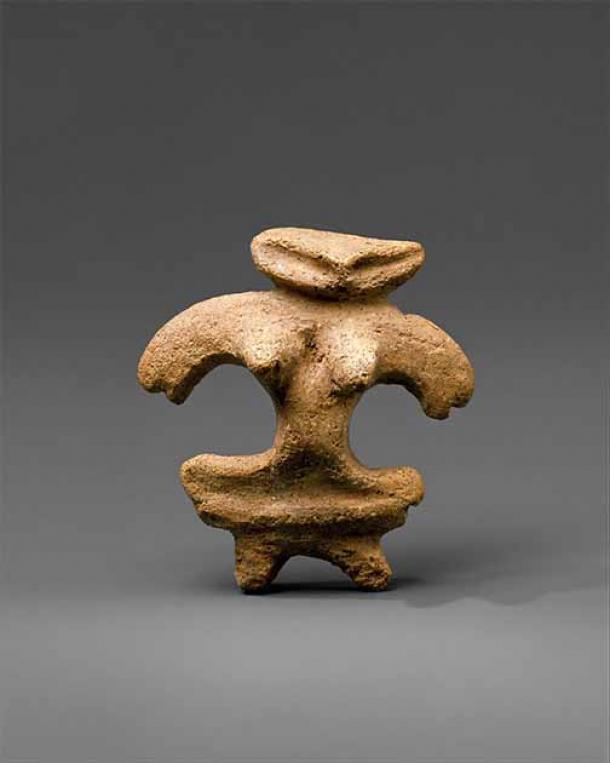
Figure 1. Dogu Clay Figurine, 1000-300 BC. (Metropolitan Museum of Art, NY)
The basis for the belief that most dogu had some fertility connotation is derived from scholarship regarding other cultures. The figures are often compared to other figures, predominately of western culture, such as the prehistoric Venus of Willendorf. Images such as Venus/Woman of Willendorf are considered most likely to represent either an all-encompassing Earth Mother, or the idea that prayer for fertility and safe births was necessary.
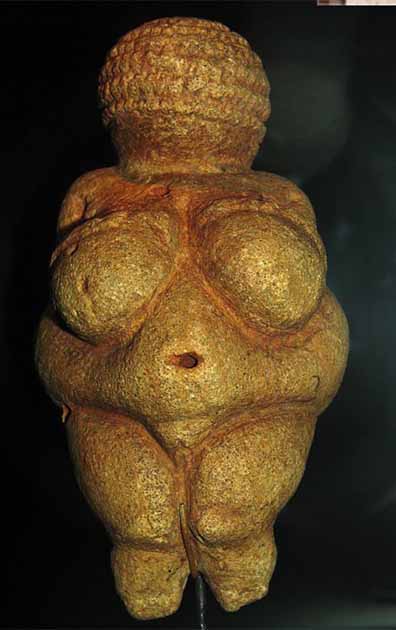
The Venus of Willendorf, statuette found in Austria, thought to have been made between 28,000 and 25,000 BC. (Don Hitchcock/CC BY-SA 4.0)
Looking at such dogu as Figure 1, it is understandable to postulate a similar function because of the figure's emphasis. Again, while all found dogu share wide hips and shoulders, there is a heightened emphasis on the Venus figures¸ as seen in the love handles and bare chest in Figure 1. Placing this depiction in conjunction with the time frame of the Jomon, a time in history when medicinal knowledge was limited and the likelihood of dying in childbirth was high, these fertility images would have been both important sources of faith and hope for the continuation of familial lines. Thus, these figures might have acted as godly offerings from the Jomon people, physical and representative prayers for safe delivery.
Another variation of the dogu figures are the previously mentioned "goggle-eyed" type, described by scholars as looking like "spacemen," because their exaggerated eyes are exaggerated (Figure 2). The pertinence of this description is that these were undoubtedly not used in the same way as the venuses, based strictly on the placement of emphasis. While still wide-hipped, the eyes are their most important feature, thus it can be assumed that watchfulness was their importance.
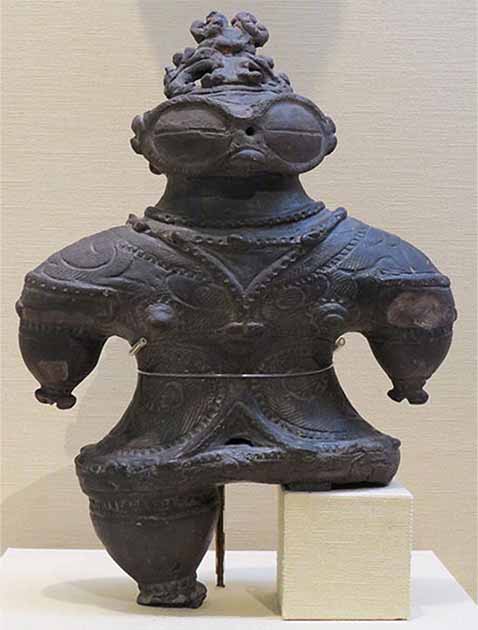
Figure 2. Shakōki-dogu, 1000-400 BC. Tokyo National Museum, Japan. "Goggle-eyed type." (Rc 13/CC BY-SA 4.0)
Figurines of Mystery: Unravelling Religious and Magical Aspects of Jomon Culture
The Jomon were a society of hunters and gatherers, as were most groups in the period, however their uniqueness laid in their security. They, unlike other cultures, had a plentiful food supply, little risk of invasion because of their location, and therefore a lot of leisure time. Thus, their watchfulness undoubtedly would not have applied to hunting endeavors or warfare. The watchfulness—if that is indeed the intention of the goggle eyes—could very likely have applied to religion, in the same way the ancient Sumerian votives emphasized big, bright, lapis lazuli eyes.
Once more, it is impossible to definitively know the purpose of the dogu, so it is logical to turn to other cultures for advice. In the Sumerian culture, human figurines were often placed on the temples of ziggurats as permanent stand-ins for worshippers, so the gods would be aware that these people were constantly praying. These "goggle-eyed" dogu might have been used for the same type of religious substitution, whether they were worshipping a particular deity or were intended to represent a person's trip to the afterlife.
What all forms of the dogu have in common are the postulations for their functions. The previously mentioned concept of fertility protection or enhancement allows for the theory of a Jomon belief in magical practices. It is unknown for certain whether the Jomon had the equivalent of wise women or men, shamans or priests, but in reviewing all the discussed evidence, there does appear to be a form of religious practice at play with the figurines.
They were, as mentioned, predominately discovered in graves or stone circles (considered by scholars to be equivalent to shrines), indicating through their locations that they were undoubtedly used in rituals of some kind.
- The Mysterious Aboriginal Rock Art of the Wandjinas
- 9,000-year-old human remains may shed light on prehistoric Okinawa

Ōyu Stone Circles is an ancient ruins in Kazuno City, Akita, Japan. The site is the largest stone circle in Japan. (掬茶/ CC BY-SA 4.0)
Sacred Context: Dogu's Ritual Placement in Graves and Stone Circles
More importantly, and pertinent to this argument, all of the dogu found—spanning the various types—were intentionally found broken. There is no evidence that they were worn down through time or shattered by accident. According to current scholarship, there are definitive indications that they were broken on purpose.
As the dogu disappeared by the time of the cultural shift into the Yayoi period, 300 BC, it is logical to assume that the dogu figurines were particular to the Jomon culture rather than adopted and adapted by the new settlers. Therefore, whatever purpose they had for the Jomon was lost by the time the Yayoi period ended. However, due to their similarities to other religious forms of pre-historic art, the findings of dogu in cemeteries—innate places of religion—and the apparent intentional breaking of the statues, it can be logically postulated that these figures were part of some form of religious and shamanic culture in the Jomon period. It is merely the misfortune of time that this cannot be definitively known.

Jomon clay statue, Kazahari I, Aomori Prefecture. Late Period, 1500 – 1000 BC. PHGCOM/CC BY-SA 3.0)
Resonating Echoes: Dogu's Enduring Influence in Modern Japanese Art
The legacy of dogu figurines, originating from the ancient Jomon culture, continues to resonate within modern Japanese art, serving as a wellspring of inspiration for contemporary artists. The distinct forms, intricate designs, and enigmatic symbolism of dogu have left an indelible mark on Japan's artistic landscape.
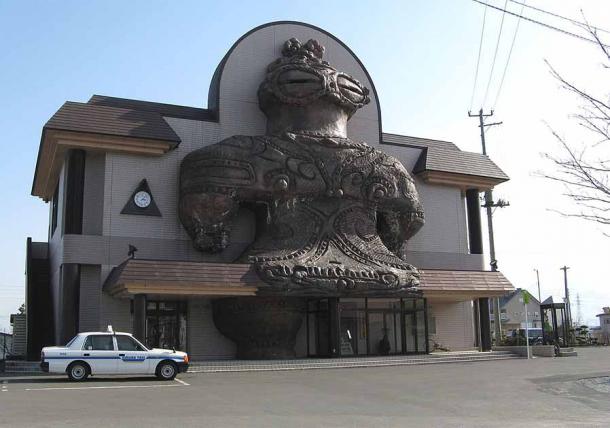
Kizukuri Station on the JR Gono Line in Tsugaru, Aomori Prefecture, Japan. (Bakkai/CC BY-SA 3.0)
These ancient artifacts evoke a sense of connection to the past, prompting artists to reinterpret and incorporate dogu-like elements into their work. From sculpture and ceramics to contemporary installations, echoes of dogu's unique aesthetic can be seen in various artistic expressions, bridging the gap between centuries.
Top image: Prehistoric Jomon dogu statue with large eyes and hips, Ebisuda Site in Tajiri, Miyagi Prefecture, Japan. 1000–400 BC. Source: World Imaging/CC BY-SA 3.0
References
Erhardt, M. 2013. Pre-historic and Neolithic Art. Class Lecture, World Art in Context I from Christopher Newport University, Newport News, VA.
Habu, J. 2008. Growth and Decline in Complex Hunter-gatherer Societies: A Case Study from the Jomon Period Sannai Maruyama Site, Japan. Antiquity, Vol. 82, No. 1, 571-584.
James, N. and Juliet C. 2010. Figurine Enigmas: Who's to Know? Antiquity, Vol. 84, No. 1, 1172-76.
Kakudo, Y. 1991. The Art of Japan: Masterworks in the Asian Art Museum of San Francisco. San Francisco: Chronicle Books.
Noma, S. 1966. The Arts of Japan. New York: Harper & Row.
Plante, J.D. 1992. Asian Art. Stanford: McGraw Hill.
Waller, R. 2009. Vessels and Ritual Objects: Pre-Columbian Ceramics from the Permanent Collection. Lora Robins Gallery of Design from Nature. Richmond: University of Richmond Museums. Available at: http://museums.richmond.edu/exhibitions/lora-robins-gallery/pre-columbian-ceramics.html
Stanley-B, J. 2000. Japanese Art. London: Thames & Hudson.
The Metropolitan Museum of Art. 2004. " Early Dynastic Sculpture, 2900–2350 BC." In Heilbrunn Timeline of Art. Available at: History. http://www.metmuseum.org/toah/hd/edys/hd_edys.htm
















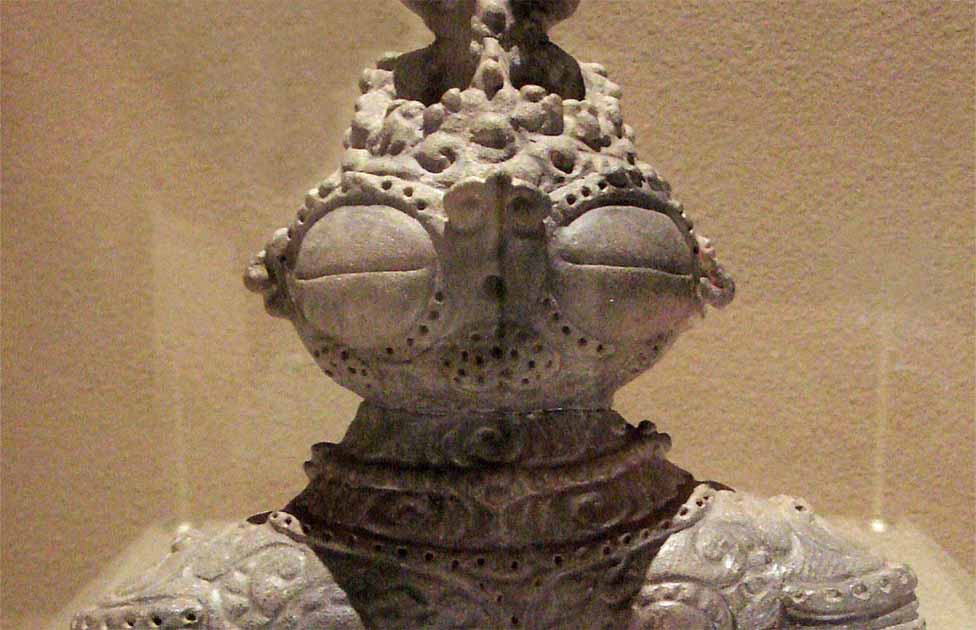

Comments
also consider that other hominids besides sapiens existed and that the bulging eyes are consistent with deep forest species where light is limited & night vision (predators & danger fire presents in providing vision and protection) is advantageous. interestingly Gargoyles,protectors of temples and other structures seem to favor similar qualities
Excellent points! And pretty much the last word when it comes to this sort of historical mystery. We don't know: therefore Aliens! needs a bit more effort.
I certainly think there are intriguing signs of advanced civilisation/s in prehistory, but it irritates me that it is always framed in an extra-terrestrial narrative. Perhaps we simply haven't found evidence of an intelligent species which evolved before us and was wiped out, and/or indeed that there were advanced human civilizations that perished. We take a lot for granted, but we must always remember only a tiny jot of what has existed was ever fossilised, and only a fraction of that has been discovered. Metal and stone artifacts can only be dated based on where they were buried, so, for example, marble from Roman temples is found broken up and used in Medieval cathedrals, and who knows how much of the gold or other metals/stones found in viking or medieval sites wasn't looted from Egyptian tombs or from other nations ancient artifacts. People destroy and recycle these things on a regular basis, and to this day in most places they have no respect for history when matters of survival and self interest come first. It is a real wonder anything survives intact at all. The subject will always be open to speculation because "evidence" is in the eye of the beholder and everything else is dust.
These things are just art, like all of the art of the rest of the world. They do not need to have an unearthly origin, dreamt up for them by people who obviously have never had such creative urges!!
Often people get given visions by God of THEIR own cultures current thinking of what God is, or looks like, nowadays we have the interdenomenational all-embracing (even atheists) Spaceships
then it was maybe something that looked something like this , miraculously appearing to a sculptor who then was “inspired” to create the statue.
Modern Buddhists just say “Everything’s like space” which is a phrase we should think about!
Graham M, thank you for reasonable response to jabberwocky. Aliens may slum on Earth or such, but--please!--may we never again hear: "...but ancient alienists theorists...." Scaley, bug-eyed critters a staple of art from antiquity to kindergarten.
Pages